Ciplox 500 Mg
Ciplox 500 Tablet is an antibiotic, used in the treatment of bacterial infections. It is also used in treating infections of the urinary tract, nose, throat, skin and soft tissues and lungs (pneumonia). It cures the infection by killing and stopping the growth of the infectious microorganisms.
About Ciplox-500 Tablet
Ciplox-500 Tablet is used to treat or prevent certain infections caused by bacteria. It is prescribed for the treatment of pneumonia, gonorrhoea (a sexually transmitted disease), typhoid fever (a serious infection that is common in developing countries), infectious diarrhoea (infections that cause severe diarrhoea), and infections of the skin, bone, joint, abdomen (stomach area), and prostate (male reproductive gland).
Ciplox-500 Tablet contains an antibiotic, ‘Ciprofloxacin’, which is bactericidal in nature and works by killing bacteria that cause infections. It prevents the division of bacterial cells. It also inhibits the repair of bacterial cells. Altogether, it kills the bacteria.
Ciplox-500 Tablet should be taken in the dose and duration as advised by your doctor. In some cases, you may experience nausea, diarrhoea, abnormal liver function tests, vomiting, and rash. Most of these side effects of Ciplox-500 Tablet do not require medical attention and gradually resolve over time. However, if the side effects are persistent, reach out to your doctor.
It is not advisable to stop this medicine suddenly to avoid unpleasant side effects. Inform your doctor if you have any lung disease, muscle weakness (myasthenia gravis), sleeping disorder or difficulty in sleeping (sleep apnoea), severe liver disease, or problem with alcohol or other prescription recreational drugs. Inform your doctor if you are planning to get pregnant, are pregnant or breastfeeding. If you experience any symptoms of an allergic reaction such as rashes, itching, swelling, shortness of breath, etc. you should contact a doctor immediately.
Side Effects of Ciplox-500 Tablet
- Nausea
- Diarrhoea
- Vomiting
- Rash
- Liver function tests abnormal
- Change of the heart rhythm (ECG)
- Low blood potassium level
Uses of Ciplox-500 Tablet
Ciplox-500 Tablet is used to treat Bacterial infections. The detailed uses of Ciplox-500 Tablet are as follows: <br/> • Respiratory Infections: Ciplox-500 Tablet is the antibiotic, effective against bacterial respiratory infections like pneumonia and bronchitis.<br/> • Urinary Tract Infections (UTIs): Ciplox-500 Tablet is also used to treat complicated and uncomplicated UTIs.<br/> • Skin Infections: Ciplox-500 Tablet is prescribed to treat skin and soft tissue infections caused by susceptible bacteria.<br/> • Sinusitis: Ciplox-500 Tablet helps to treat bacterial sinus infections, easing symptoms and eliminating the disease.<br/> • Prostatitis: Ciplox-500 Tablet is effective in treating bacterial prostatitis, an infection that causes prostate gland inflammation.<br/> • Sexually Transmitted Infections: Ciplox-500 Tablet can be used to manage sexually transmitted diseases such as gonorrhea and chlamydia effectively.<br/> • Infectious Diarrhea: Ciplox-500 Tablet is also effective in treating infectious diarrhea caused by certain bacterial strains.<br/>
Directions for Use
- Ciplox-500 Tablet can be taken with or without food or as advised by your doctor.
- Follow your doctor’s instructions on the dosage and timing of this medication.
- Swallow Ciplox-500 Tablet as a whole with a glass of water.
- Do not crush, break, or chew it.
Medicinal Benefits
Ciplox-500 Tablet contains the antibiotic Ciprofloxacin, which helps treat and prevent a wide range of bacterial infections. It is bactericidal in nature and works by killing bacteria that cause infections. It prevents the division of bacterial cells and inhibits the repair of bacterial cells. Both these actions lead to the killing of the bacteria.
How Ciplox-500 Tablet Works
Storage
- Inform your doctor about the nausea and discuss possible alternatives to the medication or adjustments to the dosage.
- Divide your daily food intake into smaller, more frequent meals to reduce nausea.
- Opt for bland, easily digestible foods like crackers, toast, plain rice, bananas, and applesauce.
- Avoid certain foods that can trigger nausea, such as fatty, greasy, spicy, and smelly foods.
- Drink plenty of fluids, such as water, clear broth, or electrolyte-rich beverages like coconut water or sports drinks.
- Use ginger (tea, ale, or candies) to help relieve nausea.
- Get adequate rest and also avoid strenuous activities that can worsen nausea.
- Talk to your doctor about taking anti-nausea medication if your nausea is severe.
- Record when your nausea occurs, what triggers it, and what provides relief to help you identify patterns and manage your symptoms more effectively.
- Inform Your Doctor: Notify your doctor immediately about your diarrhoea symptoms. This allows them to adjust your medication or provide guidance on managing side effects.
- Stay Hydrated: Drink plenty of fluids to replace lost water and electrolytes. Choose water, clear broth, and electrolyte-rich drinks. Avoid carbonated or caffeinated beverages to effectively rehydrate your body.
- Follow a Bland Diet: Eat easy-to-digest foods to help firm up your stool and settle your stomach. Try incorporating bananas, rice, applesauce, toast, plain crackers, and boiled vegetables into your diet.
- Avoid Trigger Foods: Steer clear of foods that can worsen diarrhoea, such as spicy, fatty, or greasy foods, high-fibre foods, and dairy products (especially if you’re lactose intolerant).
- Practice Good Hygiene: Maintain good hygiene to prevent the spread of infection. To stay healthy, wash your hands frequently, clean and disinfect surfaces regularly, and avoid exchanging personal belongings with others.
- Take Anti-Diarrheal Medications: If your doctor advises, anti-diarrheal medications such as loperamide might help manage diarrhoea symptoms. Always follow your doctor’s directions.
- Keep track of your diarrhoea symptoms. If they don’t get better or worse or are accompanied by severe stomach pain, blood, or dehydration signs (like extreme thirst or dark urine), seek medical help.
- Preventing Vomiting (Before it Happens)
- Take medication exactly as prescribed by your doctor. This can help minimize side effects, including vomiting.
- Having a small meal before taking your medication can help reduce nausea and vomiting.
- Talk to your doctor about taking anti-nausea medication along with your prescribed medication.
- Managing Vomiting (If it Happens)
- Try taking ginger in the form of tea, ale, or candy to help alleviate nausea and vomiting.
- What to Do if Vomiting Persists
- Consult your doctor if vomiting continues or worsens, consult the doctor for guidance on adjusting your medication or additional treatment.
- Take medications with food (if recommended): It can help prevent stomach distress and indigestion.
- Eat smaller, more frequent meals: Divide daily food intake into smaller, more frequent meals to ease digestion.
- Avoid trigger foods: Identify and avoid foods that trigger indigestion, such as spicy, fatty, or acidic foods.
- Stay upright after eating: Sit or stand upright for at least 1-2 hours after eating to prevent stomach acid from flowing into the oesophagus.
- Avoid carbonated drinks: Avoid drinking carbonated beverages, such as soda or beer, which can worsen indigestion.
- Manage stress: To alleviate indigestion, engage in stress-reducing activities like deep breathing exercises or meditation.
- Consult a doctor if needed: If indigestion worsens or persists, consult a healthcare professional to adjust the medication regimen or explore alternative treatments.
- Skin rash caused by allergies is due to irritants or allergens. Therefore, avoid contact with such irritants.
- Consult your doctor for proper medication and apply an anti-itch medication. Follow the schedule and use the medication whenever needed.
- Protect your skin from extreme heat and try to apply wet compresses.
- Soak in the cool bath, which gives a soothing impact to the affected area.
- If you have symptoms such as pain, swelling, redness, or warmth in your veins after taking medication, contact your doctor right once. Share information about your symptoms, medication regimen, and medical history.
- Your doctor will then assess your medication regimen to determine if it’s contributing to the thrombophlebitis. This assessment will help identify the best course of action to manage your condition and prevent further complications.
- Your doctor may suggest certain diet and lifestyle changes to help manage your condition. This may include increasing your intake of foods rich in omega-3 fatty acids, staying hydrated, exercising regularly, and maintaining a healthy weight. Your doctor may also advise medications to reduce inflammation, prevent blood clots, or manage pain if necessary.
- If your condition does not improve or persists, consult your doctor and report your condition. Your doctor will assess your progress, adjust your treatment plan if necessary, and provide appropriate advice to ensure the best possible outcome.
- If you have symptoms such as pain, swelling, redness, or warmth in your veins after taking medication, contact your doctor right once. Share information about your symptoms, medication regimen, and medical history.
- Your doctor will then assess your medication regimen to determine if it’s contributing to the thrombophlebitis. This assessment will help identify the best course of action to manage your condition and prevent further complications.
- Your doctor may suggest certain diet and lifestyle changes to help manage your condition. This may include increasing your intake of foods rich in omega-3 fatty acids, staying hydrated, exercising regularly, and maintaining a healthy weight. Your doctor may also advise medications to reduce inflammation, prevent blood clots, or manage pain if necessary.
- If your condition does not improve or persists, consult your doctor and report your condition. Your doctor will assess your progress, adjust your treatment plan if necessary, and provide appropriate advice to ensure the best possible outcome.
What if I have taken an overdose of Ciplox-500 Tablet
Drug Warnings
Do not take Ciplox-500 Tablet if you are allergic or have had a severe reaction to ciprofloxacin or any other quinolone or fluoroquinolone antibiotic such as delafloxacin gemifloxacin, levofloxacin, moxifloxacin and ofloxacin. Taking Ciplox-500 Tablet may increase the chances of developing tendinitis (swelling of a fibrous tissue that connects a bone to a muscle) or have a tendon rupture (tearing of a fibrous tissue that connects a bone to a muscle). Inform your doctor if you have or have ever had a kidney, heart, or lung transplant, kidney disease, a joint or tendon disorder such as rheumatoid arthritis (auto immune disorder of joints causing pain, swelling, and loss of function), seizures (fits), epilepsy or if you participate in regular physical activity. Taking Ciplox-500 Tablet may worsen muscle weakness in people with myasthenia gravis (a disorder of the nervous system that causes muscle weakness) and cause severe difficulty breathing or death. Dairy products should be avoided along with Ciplox-500 Tablet . And also, exposure to sunlight should be avoided while taking Ciplox-500 Tablet as it may cause increased phototoxicity or photosensitivity. Patients with epilepsy, and irregular heartbeat (especially a condition known as QT prolongation) should tell their doctor before taking Ciplox-500 Tablet .
| Quantity | 10 Tablets, 30 Tablets, 50 Tablets, 100 Tablets, 200 Tablets, 300 Tablets, 500 Tablets, 1000 Tablets |
|---|

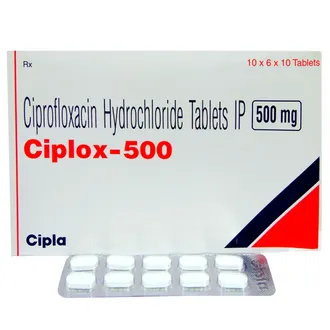
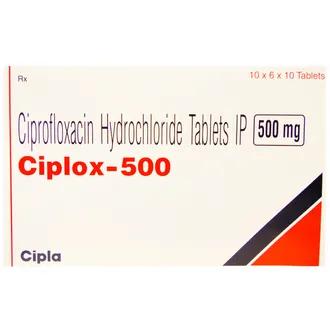
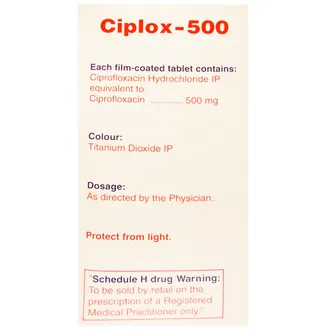
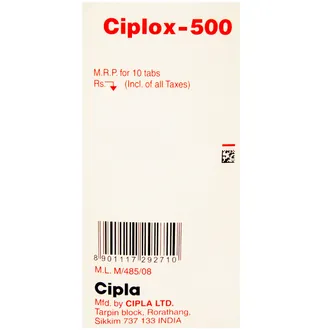
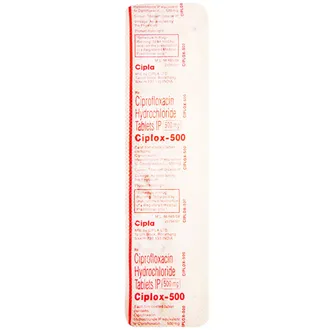
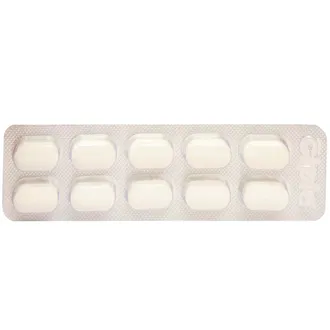
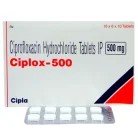
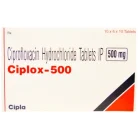
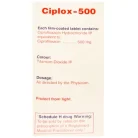
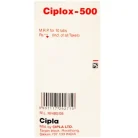
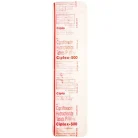
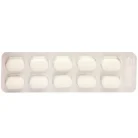
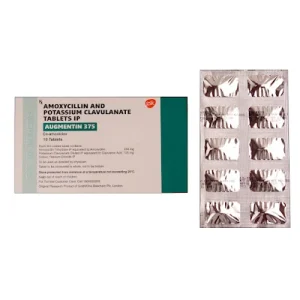
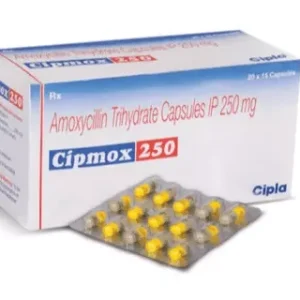
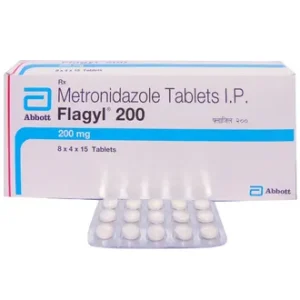
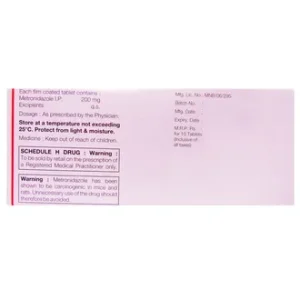
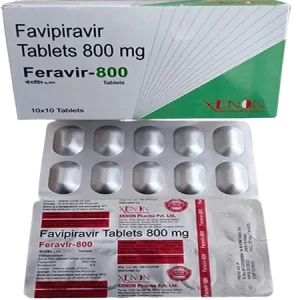

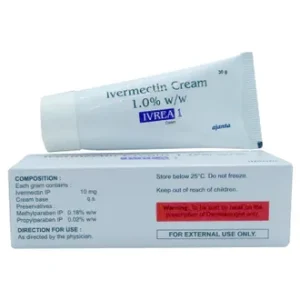
Reviews
There are no reviews yet.